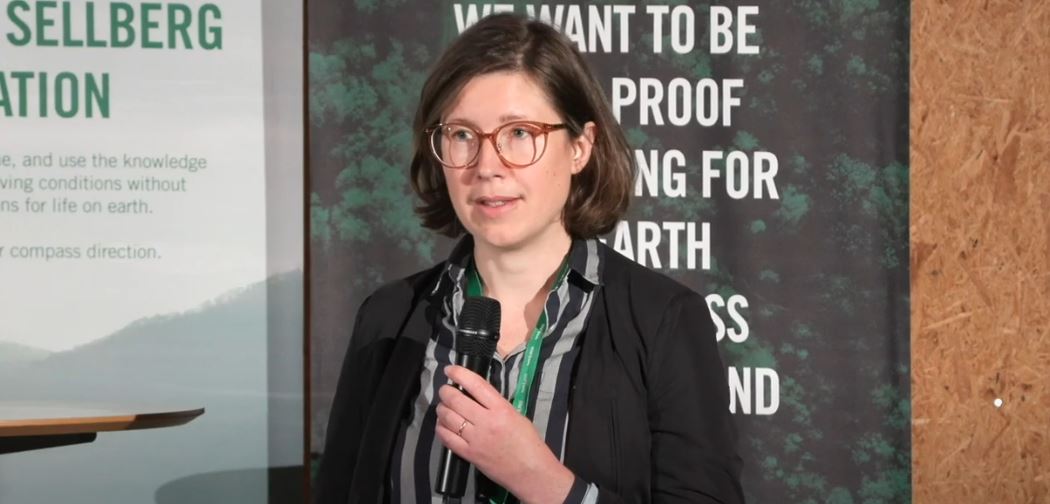Taking "forever chemicals" out of circulation
At the Future Day seminar, ecotoxicologist Hanna Holmquist illustrated the urgency of a proposed universal ban on the “forever chemicals” known as PFAS. While these hazardous substances pose a challenge in the circular transition, new regulations and research are charting the path forward.
20 Jan 2025One hallmark of the circular economy is that products and materials have as long a lifespan as possible. But according to Holmquist, anything containing per- and polyfluoroalkyl substances (PFAS) should be an exception.
She made this case in her presentation “PFAS do not belong in circular material flows”, delivered at Framtidsdagen (Future Day) 2024. That seminar, co-organised by Ragn-Sells and the Ragnar Sellberg Foundation, features talks on new trends and innovations in recycling and the circular transition, this time with the theme of detoxification.
For Holmquist and her colleagues at the NGO ChemSec, PFAS are among the most urgent toxic chemicals to phase out of use. These are the “forever chemicals” found in everything from plastic and electronics to paints and textiles. They stay in the environment and can be highly mobile, with some linked to serious health issues. And in 2020, their estimated annual use was 840,000 tonnes, producing 75,000 tonnes of emissions.
– The more worrying fact is that if we estimate emissions in the future in 2050, these would be 4.4 million tonnes of PFAS, said Holmquist.
 Hanna Holmquist at the seminar Framtidsdagen (Future Day).
Hanna Holmquist at the seminar Framtidsdagen (Future Day).
Getting PFAS out of the supply chain
Holmquist shared some of ChemSec’s initiatives to support a shift away from PFAS. Closest to her heart is the SIN List, a project that she manages. While the European Chemicals Agency (ECHA) has a Candidate List of around 250 substances of very high concern, that process moves slowly. ChemSec’s SIN List applies the same criteria but more efficiently, having identified over 1,400 high-concern substances to phase out.
The tool is one of many ChemSec resources designed to support companies who want to be proactive and stay ahead of these regulations.
– We see proof all the time that substances are being put on [ECHA’s] Candidate List, but we put them on the SIN List [back] in 2008 or 2015. We also use it, of course, to put pressure on legislators to move forward with speed and urgency, explained Holmquist.
The team at ChemSec advocates for a universal ban, which may become a reality: a proposal is currently under discussion at ECHA. Until then, the bans and restrictions in place in the EU remain fragmented, allowing some PFAS to fall through the cracks.
“We have to turn off the tap”
In her talk, Holmquist stressed how important it is that the shift to the circular economy also supports an end to PFAS use. Both are necessary for a sustainable society, but their immediate requirements are sometimes at odds.
– We have to turn off the tap, but we also have to be careful with what we do with the stock we have in society already, she said.
For instance, many textiles contain PFAS, so keeping those products in circulation would mean a greater build-up of toxic chemicals in the environment and more harmful emissions over time.
– If we want to effectively phase out products that contain PFAS, then these products might be given a shorter life length or shorter circulation in society than otherwise possible. Then we reduce the effect of the circular economy, in a sense, said Holmquist.
Luckily, there are already methods to identify which materials have these chemicals, with even more in development. To Holmquist, the key is making sure PFAS are dealt with sustainably, rather than just moved from place to place.
Supporting innovation for the path ahead
Holmquist highlighted how much progress has already been made. Some of the highest-use industries – transportation, textiles, and construction – already have viable alternatives to allow them to phase out PFAS. And for industries without current alternatives, like medical devices or some areas of the energy sector, she is confident that innovation is possible.
– We need to empower research to find alternatives, to not settle down here and just say there are no alternatives. If we have research in place, there will be alternatives, we're quite convinced, in due time, she said.
If policy can promote innovation and support a market for new approaches, then the movement against PFAS can maintain its momentum.
– A lot of things are happening, and we should be very happy about that and proud, but we need to do more, she said.
Watch the full presentation with Hanna Holmquist from Framtidsdagen (Future Day):
